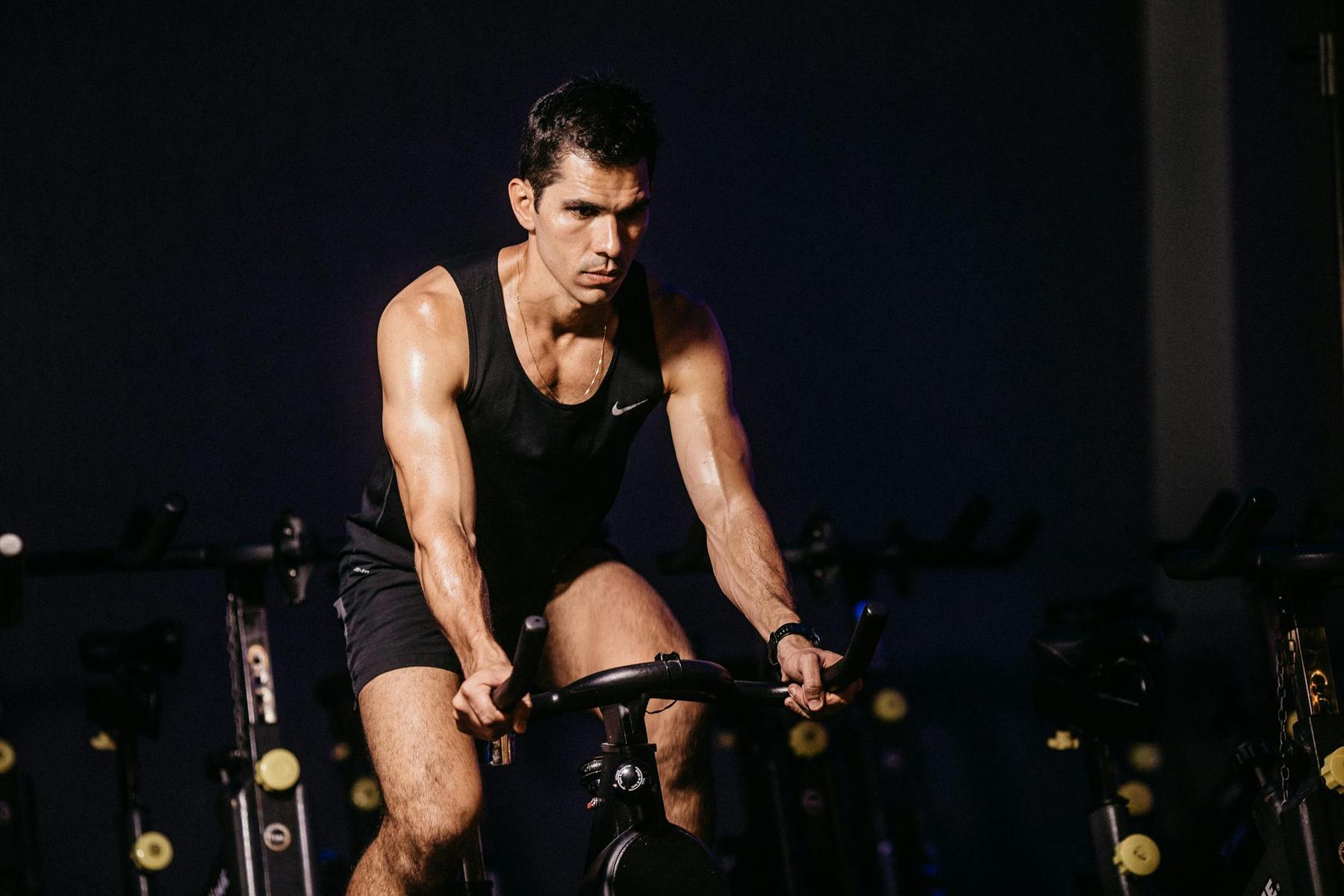The Metabolic Power of Indoor Cycling
In the quest for efficient weight management, spin classes have emerged as one of the most potent tools in the modern fitness arsenal. These high-intensity indoor cycling sessions combine cardiovascular conditioning with muscular engagement to create an unparalleled calorie-burning environment. For time-pressed individuals seeking maximum metabolic impact with minimal joint stress, spin classes represent the pinnacle of exercise efficiency.
Current research demonstrates that a standard 45-minute spin session can expend between 400-600 calories, with ongoing metabolic effects that continue burning energy hours after you’ve stepped off the bike. This positions indoor cycling as a superior option compared to traditional steady-state cardio exercises, particularly when optimised through strategic interval protocols.
But what exactly makes spin classes so exceptionally effective for rapid calorie expenditure, and how can you maximise their benefits? Let’s examine the science behind the spin phenomenon and explore how these sessions can be integrated into a comprehensive approach to weight management.
How Many Calories Can You Actually Burn in a Spin Class?
The caloric expenditure during spin classes is governed by several interconnected physiological processes:
- Direct energy expenditure through ATP-CP and glycolytic pathways during high-intensity intervals
- Sustained aerobic metabolism during moderate-intensity periods
- Excess post-exercise oxygen consumption (EPOC) – the “afterburn effect” that continues elevating metabolism post-workout
Using the Metabolic Equivalent of Task (MET) framework, spin intensities typically range from 6.8 METs (moderate effort) to 12+ METs (sprint intervals). For context, this places intense spinning at roughly the same energy expenditure as running at 10 km/h.
For a 75kg individual participating in a 45-minute session at an intensity of 10 METs, the caloric yield would be approximately 590 kcal. However, this figure varies significantly based on individual factors:
| Factor | Impact on Calorie Burn |
|---|---|
| Body mass | A 100kg person burns ~40% more calories than a 70kg person at identical intensity |
| Sex | Physiological differences create 15-20% variance in baseline metabolic rates |
| Age | MET capacity typically declines 8-10% per decade after age 25 |
| Fitness level | Higher VO₂ max enables sustained higher intensities and greater calorie expenditure |
Modern spin bikes often incorporate power meters measuring output in watts, allowing for personalised tracking of energy expenditure. At race pace intensity (around 180 watts), a 70kg individual might burn up to 850 calories in a 45-minute session.
Why Do HIIT-Based Spin Classes Maximise Calorie Burning?
The magic of spin classes lies in their incorporation of High-Intensity Interval Training (HIIT) principles. These protocols trigger powerful neuroendocrine responses that dramatically enhance caloric throughput through several mechanisms:
Metabolic Acceleration
HIIT protocols in spin classes trigger catecholamine surges that:
- Mobilise free fatty acids via β-adrenergic receptor activation
- Increase post-exercise resting energy expenditure by 9-15% for 24-48 hours
- Enhance insulin sensitivity through GLUT4 translocation
Research demonstrates that structured spin HIIT protocols can elevate the “afterburn effect” (EPOC) to contribute an additional 15% of total session calories. For a 600-calorie workout, this represents an additional 90+ calories burned after you’ve left the gym.
Optimal Interval Structures
The most effective spin classes balance work-to-recovery ratios based on physiological principles:
- 30-second maximal sprints followed by 4-minute recovery periods
- 4-minute threshold intervals at 90-95% maximum heart rate
- Pyramid sessions that progressively alter the work-to-rest ratio
A controlled study demonstrated that 6 weeks of spin HIIT produced significantly better outcomes than traditional cardio, including:
- Greater reduction in body fat (2.1 kg vs 0.7 kg)
- Superior increase in VO₂ max (12% vs 4%)
- More substantial improvement in lipid profiles
How Does Spin Compare to Other Exercise Modalities for Calorie Expenditure?
When evaluating exercise efficiency, calorie expenditure per minute provides a useful metric for comparison. For a 70kg adult, the numbers tell a compelling story:
| Activity | MET Value | kcal/min | 45-min Total |
|---|---|---|---|
| Spin HIIT | 10.5 | 12.9 | 580 |
| Running (10kph) | 10 | 11.7 | 527 |
| Swimming | 8 | 9.4 | 423 |
| Elliptical | 6 | 7.1 | 320 |
Beyond raw calorie numbers, spin classes offer significant advantages over other high-intensity options:
Reduced Orthopedic Stress
The non-weight-bearing nature of cycling dramatically reduces injury risk compared to impact-based activities:
- Ground reaction forces in cycling are approximately 1.1x body weight versus 2.5-3x body weight when running
- Joint stress is significantly lower than in activities like squatting or jumping
- Lower back compression is minimal compared to weightlifting movements
These biomechanical advantages make spin classes accessible to diverse populations, including those with higher BMIs or joint concerns who might struggle with other high-intensity exercise modes.
What Makes an Effective Spin Class for Maximum Calorie Burn?
Not all spin classes are created equal when it comes to calorie expenditure. The most effective sessions incorporate specific elements designed to maximise metabolic impact:
Structured Periodisation
Phase-based programming prevents plateaus and ensures continued adaptation:
- Foundational Phase (Weeks 1-4): Focus on aerobic base building at 60-70% max heart rate
- Metabolic Phase (Weeks 5-8): Incorporate threshold intervals at 80-90% max heart rate
- HIIT Phase (Weeks 9-12): Implement sprint pyramids reaching 90-110% max heart rate
This progressive approach allows for continuous physiological adaptation without overtraining or injury risk.
Technology Integration
Modern spin classes leverage technology to optimise calorie expenditure:
- Heart rate monitors enable precise zone training
- Power meters provide objective measurement of work output
- Performance tracking apps allow progress monitoring over time
These technological elements remove the guesswork from training intensity and ensure participants are working at their optimal calorie-burning zone.
Nutritional Synergies
Strategic nutrition can amplify the calorie-burning effects of spin classes:
- Consuming 0.8g/kg carbohydrates plus 0.4g/kg protein within 30 minutes post-workout supports recovery
- Proper hydration with electrolyte-enhanced fluids enhances performance and prevents premature fatigue
- Pre-workout caffeine (approximately 3mg/kg body weight) can elevate fat oxidation by up to 27%
These nutritional strategies work synergistically with the exercise stimulus to maximise both immediate and ongoing calorie expenditure.
How Can Spin Classes Support Medical Weight Management?
When incorporated into a comprehensive weight management approach, spin classes can serve as a powerful catalyst for results. Modern telehealth services now integrate prescribed exercise protocols with medical supervision for optimal outcomes.
Data from clinical settings demonstrates that combining structured spin HIIT protocols with medical weight management can significantly enhance results. One dataset showed that participants engaging in spin HIIT alongside medical intervention experienced:
- 14.7% weight reduction versus 8.2% with medical intervention alone
- 9.8cm greater reduction in waist circumference
- Improved cardiovascular markers including blood pressure and lipid profiles
The high-intensity nature of spin classes makes them particularly effective for:
- Improving insulin sensitivity
- Reducing visceral fat stores
- Enhancing mitochondrial function
- Supporting metabolic flexibility
These physiological adaptations create an internal environment more conducive to weight management when combined with appropriate medical support.
Maximising Your Spin Class Experience
To extract maximum calorie-burning benefit from spin classes, consider these evidence-based strategies:
- Use heart rate monitoring to ensure you’re reaching appropriate intensity zones
- Focus on proper form to engage the full range of working muscles
- Incorporate varied resistance levels rather than relying solely on speed
- Follow structured programming rather than random workout selection
- Consider recovery needs between high-intensity sessions to prevent overtraining
Remember that consistency trumps occasional extreme effort. A sustainable approach incorporating 2-3 weekly spin sessions will yield superior long-term results compared to sporadic over-exertion.
Conclusion: The Metabolic Powerhouse of Modern Fitness
Spin classes optimised through HIIT protocols and technology integration represent the current pinnacle of time-efficient calorie expenditure. Their combination of high-intensity cardiovascular challenge, reduced joint stress, and significant afterburn effect creates an unmatched environment for energy expenditure.
When incorporated into a comprehensive approach to weight management, these sessions can serve as a powerful catalyst for physiological change. The data clearly demonstrates that spin classes aren’t just another fitness trend—they’re a scientifically validated tool for maximising metabolic impact in minimal time.
For those seeking efficient, effective strategies for weight management, few modalities can match the calorie-burning potential of properly structured spin classes. As part of an integrated approach combining medical expertise with evidence-based exercise, they represent one of the most powerful tools in the modern weight management arsenal.
Skip the struggles. Our patients achieve <20.2% weight reduction with medical weight loss treatments delivered straight to their door. No clinics. No waiting. Just results. See if you’re eligible for our medical weight loss treatments – take our quiz.
How many calories can I burn in a 45-minute spin class?
A typical 45-minute spin class can burn between 400-600 calories for an average individual. However, this figure varies significantly based on factors including body weight, fitness level, sex, age, and workout intensity. Higher-intensity classes incorporating sprint intervals can exceed 600 calories, while less intense sessions might yield 350-400 calories. Additionally, the “afterburn effect” can contribute an extra 10-15% calorie expenditure in the hours following your workout.
How many spin classes per week are optimal for weight management?
For weight management purposes, 2-3 high-quality spin classes per week represents an optimal frequency for most individuals. This provides sufficient stimulus for metabolic adaptation while allowing adequate recovery between sessions. Those new to spinning should start with 1-2 sessions weekly and gradually progress. Extremely fit individuals might benefit from 4 sessions, but recovery capacity becomes increasingly important as frequency increases. Always coordinate exercise frequency with your healthcare provider if you’re undergoing medical weight management.
Are spin classes suitable for beginners or only for fit individuals?
Spin classes are remarkably adaptable and can accommodate virtually all fitness levels when properly approached. Beginners benefit from the self-regulated nature of stationary cycling — you control resistance levels and can modify intensity as needed. The non-weight-bearing format also reduces injury risk compared to many other high-intensity modalities. Look for beginner-friendly classes or inform instructors of your experience level for appropriate modifications. Focus initially on proper form and gradually increase intensity as your fitness improves.
How do spin classes compare to running for calorie burning?
Spin classes and running offer comparable calorie expenditure at similar intensity levels — a high-intensity spinning session burns approximately 580 calories in 45 minutes versus 527 calories for running at 10 km/h for the same duration (for a 70kg individual). However, spinning offers distinct advantages: lower joint impact, reduced injury risk, greater accessibility for various body types, and easier intensity control. The structured nature of spin classes often pushes participants to higher intensity levels than self-regulated running, potentially yielding greater real-world calorie expenditure.
Can spin classes help with medical weight management programs?
Spin classes serve as an excellent complementary component to medical weight management programs. Research demonstrates that combining structured spin HIIT with medical intervention can significantly enhance outcomes, with data showing nearly twice the weight reduction (14.7% versus 8.2%) compared to medical management alone. The high-intensity nature of spinning specifically targets metabolic factors relevant to weight management, including insulin sensitivity, visceral fat mobilisation, and mitochondrial function. Always consult healthcare providers about integrating spin classes into your comprehensive weight management approach.



